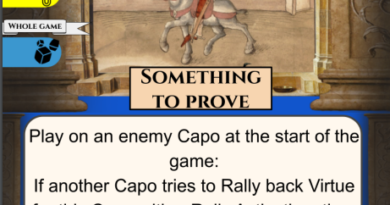Part 3: The Siege
Sources: Broglio Tartaglia Gaspare, Malatestian Chronicle of the XV century Anonymus in Tonini Luigi, Appendix of documents to Volume IV of the History of Rimini by Comm. Dr. Luigi Tonini.
Treachery!
It all begins in 1445 when Galeazzo Malatesta, known as “Galeazzo the Inept”, decides to sell the town of Pesaro for 20,000 gold florins to the brothers Francesco and Alessandro Sforza, who are the owners of many properties in the Marche region. This decision is made out of fear and Galeazzo’s inability to govern, aptly named l’Inetto, but above all to spite his cousin, Sigismondo Pandolfo Malatesta, with whom there has been a bitter family feud for some time. Galeazzo’s initiative is not shared by Sigismondo, Lord of Rimini and extensive territories from Romagna to the lower Marche, as losing Pesaro permanently would mean weakening the Malatesta territory and benefiting Federico da Montelfetro, an ally of the Sforza and a fierce rival of the Malatesta of Rimini. Moreover, this would pose a serious threat to the nearby fortress of Gradara, a crucial stronghold for the Malatesta of Rimini.
Gradara was already in the expansionist plans of Francesco Sforza, eager to establish a strong state in central Italy, since he had visited in 1442 with his wife Bianca Maria Visconti on the occasion of the engagement of his daughter Polissena Sforza to Sigismondo Pandolfo Malatesta.
It Begins…
Following these events, in October 1446, taking advantage of Sigismondo being in Rome summoned by Pope Eugenio IV to receive a rich suit of golden armor as payment for his services to the Church, Count Francesco Sforza besieges Gradara. Allies of Sforza in the attempt to conquer the Malatesta fortress include Federico da
Montefeltro, the future Duke of Urbino, Guidaccio da Faenza, and Simonetto di Castel di Piero.
Monteluro is quickly conquered, where the besiegers build bastions from which the actual siege of Gradara begins. Defending the fortress, governed by Sigismondo since 1433 (from the age of 16) on behalf of the Church, are valiant soldiers, the best in the region. The siege is terrible due to numerous assaults and the arrival of winter, causing a shortage of forage and supplies. Sigismondo, returning quickly from Rome to defend the fortress, considered a crucial stronghold due to its strategic position, is daily on horseback harassing the rear of the besieging army. For Gradara, Sigismondo takes the field for the ninth time.
Running the Gauntlet
In an attempt to help the troops besieged in the castle, Sigismondo organizes several sorties. Among the first to bring aid and supplies to the fortress is Lazzarino, known as Schiavo, from Mondaino. Sigismondo rewards him with 50 bolognini; then it’s the turn of Cristoforo Matto, a Malatesta steward, and later Paolo da Montescudo. Despite reinforcements, due to the overwhelming numerical superiority of Francesco Sforza’s army, the besieged are mostly wounded or dead during the relentless and bloody assaults on the walls, and they inform Sigismondo that they cannot hold out much longer.
Considering the gravity of the situation, Malatesta calls upon a young servant, Paolo da Montestridolo (Montescudo), asking if he has enough courage to attempt a sortie through enemy lines and enter Gradara, bringing additional reinforcements and supplies. Sir Paolo responds with these words, reported by Broglio: “My lord, to serve your lordship, I would put myself to death a thousand times a day, as your partisan that I am, and I do not ask for any reward from your lordship except your grace.” The mission is successful, and Paolo manages to break through the besiegers, albeit with heavy losses, bringing the necessary reinforcements to the men and women holed up inside the walls of Gradara.
Putting on the Pressure
At the same time, Sigismondo Malatesta tries the diplomatic route to resolve a wearing and uncertain siege. He contacts and puts himself at the service of Filippo Maria Visconti, Duke of Milan and father-in-law of Francesco Sforza. With the help of Visconti, and with the bad weather that had not given respite to the armies at war for days, Sigismondo manages to convince Count Francesco Sforza and Federico da Montefeltro to lift the siege of Gradara.
On November 29, faced with the valor of the besieged, the energy of Sigismondo harassing him on the flanks, after 43 days of siege, the great and powerful condottiero Francesco Sforza had to withdraw “with very little honor,” leaving many soldiers on the ground.


